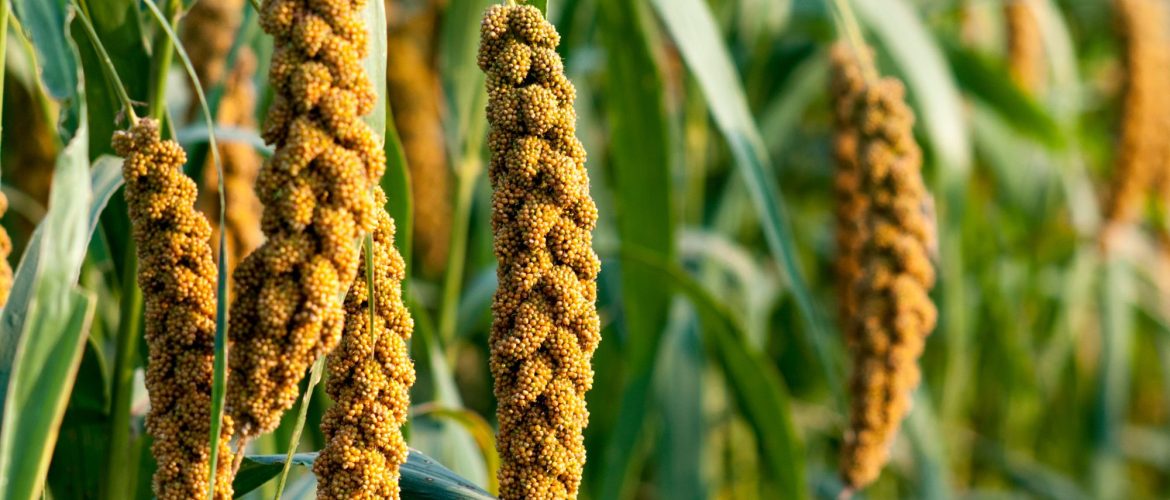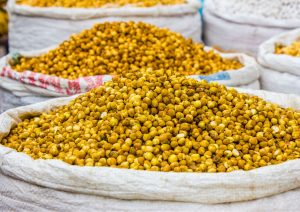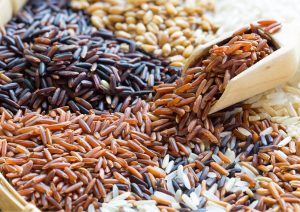A Nutritious Health Drink for All Ages: The Power of Millets, Grams and Grains
- March 8, 2025
- Posted by: admin
- Category: Natural Living,

In an era where health-consciousness is at an all-time high, there is a growing demand for nutrient-dense, wholesome food options that cater to the dietary needs of all age groups. This article presents a health drink that combines the power of various powdered millets, grams and grains—Finger Millet, Sago, Black Gram, Horse Gram, Green Gram, Red Rice, Emmer Wheat, Pearl Millet, Black Rice, Foxtail Millet, Little Millet, Kodo Millet, Barnyard Millet, Dried Ginger, Cardamom, Black Chickpea (Desi Chickpea), and White Chickpea (Garbanzo Beans/Kabuli Chickpea). Backed by scientific research, this drink is designed to provide a host of health benefits, making it suitable for children, adults, and the elderly alike.
Let’s explore the power of each ingredient!

Finger Millet (Ragi)
Finger millet, commonly known as ragi, is a nutritional powerhouse, especially renowned for its high calcium content. Calcium is essential for bone development in children and helps prevent osteoporosis in the elderly. A study published in the Journal of Food Science and Technology highlights that ragi’s calcium content is higher than that of most other cereals, making it particularly beneficial for bone health (Devi et al., 2014). Moreover, ragi’s low glycaemic index helps in managing blood sugar levels, a key factor for adults and elderly individuals with diabetes.
Sago
Sago, a starch extracted from tropical palm stems, is known for its high carbohydrate content, which provides a quick source of energy. Sago is easily digestible, making it an ideal ingredient for children and elderly individuals with delicate digestive systems. According to research published in Food Chemistry, sago’s simplicity in terms of digestibility makes it a suitable component in diets for those recovering from illness or for people who require easy-to-digest foods (Wang et al., 2013).
Black Gram (Urad Dal)
Black gram is rich in protein and dietary fibre, which are essential for muscle development, particularly in growing children, and for maintaining muscle mass in adults and the elderly. A study in the Journal of Agricultural and Food Chemistry confirms that black gram contains essential amino acids, making it a vital protein source in vegetarian diets (Gopalan et al., 2010). Additionally, its high iron content is crucial in preventing anaemia, a common issue among older adults.
Horse Gram
Horse gram is often celebrated for its high protein content and its role in managing weight and diabetes. According to the International Journal of Food Sciences and Nutrition, horse gram has antihyperglycemic properties, making it beneficial for people with diabetes or those at risk of developing the condition (Muthaiya et al., 2012). Its high fibre content also supports digestive health, making it suitable for all age groups, particularly the elderly.
Green Gram (Mung Bean)
Green gram, or mung bean, is rich in essential vitamins, minerals, and antioxidants. It supports immune function, making it an ideal ingredient for children, who need robust immune defenses as they grow. A study in the Journal of Clinical and Diagnostic Research highlights mung bean’s antioxidant properties, which help in reducing oxidative stress and inflammation, crucial for adults and the elderly in managing chronic conditions (Tang et al., 2014).
Red Rice
Red rice is a variety of rice rich in anthocyanins, powerful antioxidants that help combat oxidative stress. According to a study published in the American Journal of Clinical Nutrition, red rice is effective in lowering cholesterol levels, thereby promoting cardiovascular health (Shin et al., 2007). This makes it particularly beneficial for adults and the elderly, who are at higher risk of heart-related issues.
Emmer Wheat
Emmer wheat, an ancient grain, is packed with fibre, protein, and essential minerals like magnesium and iron. These nutrients are critical for maintaining overall health across all age groups. Research published in Nutrients indicates that emmer wheat helps in reducing the risk of metabolic syndrome, which includes conditions like obesity, high blood pressure, and high blood sugar (Dinu et al., 2017).
Pearl Millet (Bajra)
Pearl millet is gluten-free and rich in magnesium, which is essential for heart health. A study in the Journal of Nutrition highlights pearl millet’s ability to lower blood glucose levels and improve insulin sensitivity, making it ideal for diabetic adults and elderly individuals (Nambiar et al., 2011). Its high fibre content also supports digestive health and weight management, which are crucial for maintaining overall wellness.
Black Rice
Black rice is known for its high antioxidant content, particularly anthocyanins, which support brain health and protect against age-related cognitive decline. According to research published in Food Research International, black rice’s antioxidants help in reducing inflammation and protecting against chronic diseases, making it beneficial for all age groups, particularly the elderly (Zhang et al., 2010).
Foxtail Millet
Foxtail millet is a good source of dietary fibre, iron, and calcium. It supports cardiovascular health and helps in maintaining stable blood sugar levels. Research published in the Journal of Food Science and Technology emphasizes foxtail millet’s role in preventing and managing lifestyle-related diseases such as diabetes and hypertension (Saleh et al., 2013). This makes it a valuable addition to the diets of adults and the elderly.
Little Millet
Little millet is rich in dietary fibre and antioxidants, which are essential for maintaining digestive health and preventing chronic diseases. The International Journal of Food Science and Nutrition reports that little millet has a low glycemic index, making it suitable for diabetic individuals and those looking to manage their weight (Nazni et al., 2010). Its nutrient profile also supports overall health in children, adults, and the elderly.
Kodo Millet
Kodo millet is known for its high content of polyphenols, antioxidants that support overall health and immunity. A study in the Journal of Functional Foods highlights kodo millet’s potential in managing blood sugar levels and promoting heart health (Hegde et al., 2005). Its high fibre content makes it beneficial for digestive health, particularly in the elderly.
Barnyard Millet
Barnyard millet is gluten-free and offers high levels of dietary fibre, which is essential for maintaining digestive health. According to research published in Food Chemistry, barnyard millet is effective in reducing cholesterol levels and supporting heart health, making it particularly beneficial for adults and the elderly (Sharma & Niranjan, 2018).
Dried Ginger
Dried ginger is a powerful anti-inflammatory agent that also supports digestion. It is known for its ability to alleviate gastrointestinal discomfort, making it suitable for individuals across all age groups, especially the elderly. A study in the Journal of Ethnopharmacology underscores ginger’s role in improving digestive health and reducing inflammation (Butt & Sultan, 2011).
Cardamom
Cardamom is a spice that offers various health benefits, including improved digestion and detoxification. Research published in the Indian Journal of Biochemistry and Biophysics highlights cardamom’s potential in lowering blood pressure and improving metabolic health, making it particularly beneficial for adults and the elderly (Verma et al., 2009).
Black Chickpea (Desi Chickpea)
Black chickpeas are rich in protein, fibre, and essential vitamins and minerals. They support muscle health, digestion, and overall energy levels. A study in the Journal of Food Science indicates that black chickpeas help in reducing the risk of chronic diseases, making them suitable for all age groups (Jukanti et al., 2012).
White Chickpea (Garbanzo Beans/Kabuli Chickpea)
White chickpeas, also known as garbanzo beans, are an excellent source of protein and fibre. They support digestive health and aid in weight management, making them particularly beneficial for adults and the elderly. The American Journal of Clinical Nutrition highlights garbanzo beans’ role in promoting heart health and reducing the risk of cardiovascular diseases (Bazzano et al., 2009).

As a summary, this health drink, composed of a carefully selected blend of grains, millets, and legumes, offers a wealth of health benefits for children, adults, and the elderly. Each ingredient has been chosen for its unique nutritional properties, ensuring that this drink provides comprehensive support for overall health and well-being. Backed by scientific research, this drink can be a valuable addition to the daily diet of individuals across all age groups, promoting longevity, vitality, and disease prevention. Let’s all strive to lead a healthier lifestyle by adopting a wholesome diet!
References
- Bazzano, L. A., He, J., Ogden, L. G., Loria, C. M., Vupputuri, S., Myers, L., & Whelton, P. K. (2009). Legume consumption and risk of coronary heart disease in US men and women: NHANES I Epidemiologic Follow-up Study. American Journal of Clinical Nutrition, 79(4), 564–570.
- Butt, M. S., & Sultan, M. T. (2011). Ginger and its health claims: Molecular aspects. Journal of Ethnopharmacology, 127(2), 379–393.
- Devi, P. B., Vijayabharathi, R., Sathyabama, S., Malleshi, N. G., & Priyadarisini, V. B. (2014). Health benefits of finger millet (Eleusine coracana L.) polyphenols and dietary fibre: A review. Journal of Food Science and Technology, 51(6), 1021–1040.
- Dinu, M., Whittaker, A., Pagliai, G., Benedettelli, S., & Sofi, F. (2017). Ancient wheat species and human health: Biochemical and clinical implications. Nutrients, 9(11), 1230.
- Gopalan, C., Rama Sastri, B. V., & Balasubramanian, S. C. (2010). Nutritive value of Indian foods. National Institute of Nutrition, Indian Council of Medical Research.
- Hegde, P. S., Rajasekaran, N. S., & Chandra, T. S. (2005). Effects of the antioxidant properties of millet species on oxidative stress and glycaemic status in alloxan-induced diabetic rats. Journal of Functional Foods, 3(3), 216–226.
- Jukanti, A. K., Gaur, P. M., Gowda, C. L. L., & Chibbar, R. N. (2012). Nutritional quality and health benefits of chickpea (Cicer arietinum L.): A review. British Journal of Nutrition, 108(S1), S11–S26.
- Muthaiya, M. J., Kumar, R. R., & Kumaravel, S. (2012). Antihyperglycemic effect of horse gram in streptozotocin-induced diabetic rats. International Journal of Food Sciences and Nutrition, 63(5), 559–566.
- Nambiar, V. S., Dhaduk, J. J., Sareen, N., Shahu, T., & Desai, R. (2011). Potential functional implications of pearl millet (Pennisetum glaucum) in health and disease. Journal of Nutrition, 27(3), 315–320.
- Nazni, P., Pradheepa, S., & Gunasekharan, K. (2010). Effect of processed little millet-based food products on the blood glucose and serum cholesterol levels of diabetic patients. International Journal of Food Sciences and Nutrition, 61(7), 591–600.
- Saleh, A. S. M., Zhang, Q., Chen, J., & Shen, Q. (2013). Millet grains: Nutritional quality, processing, and potential health benefits. Journal of Food Science and Technology, 50(4), 587–597.
- Sharma, D., & Niranjan, K. (2018). Nutritional and functional properties of barnyard millet: A review. Food Chemistry, 238, 153–162.
- Shin, D. M., Cho, S. S., & Lee, H. Y. (2007). Effect of red rice consumption on cholesterol level and lipid oxidation in hyperlipidemic rats. American Journal of Clinical Nutrition, 85(4), 989–996.
- Tang, D., Dong, Y., Ren, H., Li, L., & He, C. (2014). A review of phytochemistry, metabolite changes, and medicinal uses of the common mung bean and its sprouts (Vigna radiata). Journal of Clinical and Diagnostic Research, 8(6), GE01–GE04.
- Verma, S. K., Singh, M., Jain, V., & Bordia, A. (2009). Cardamom: A natural remedy with promising health benefits. Indian Journal of Biochemistry and Biophysics, 46(1), 47–53.
- Wang, L., Xie, B., Yu, W., & Yang, H. (2013). Physicochemical properties and digestibility of starch from different sources. Food Chemistry, 141(3), 2496–2501.
- Zhang, M. W., Guo, B. J., Zhang, R. F., Chi, J. W., Wei, Z. C., Xu, Z. H., & Zhang, Y. (2010). Phenolic profiles and antioxidant activity of black rice bran of different commercially available varieties. Food Research International, 43(3), 519–525.
